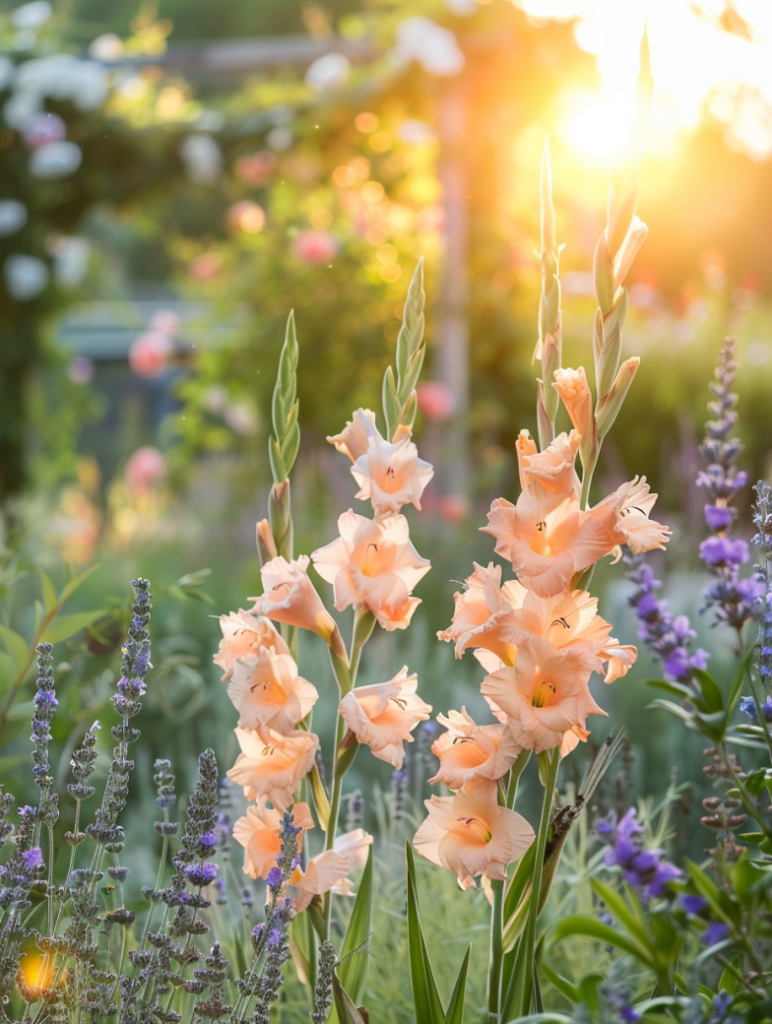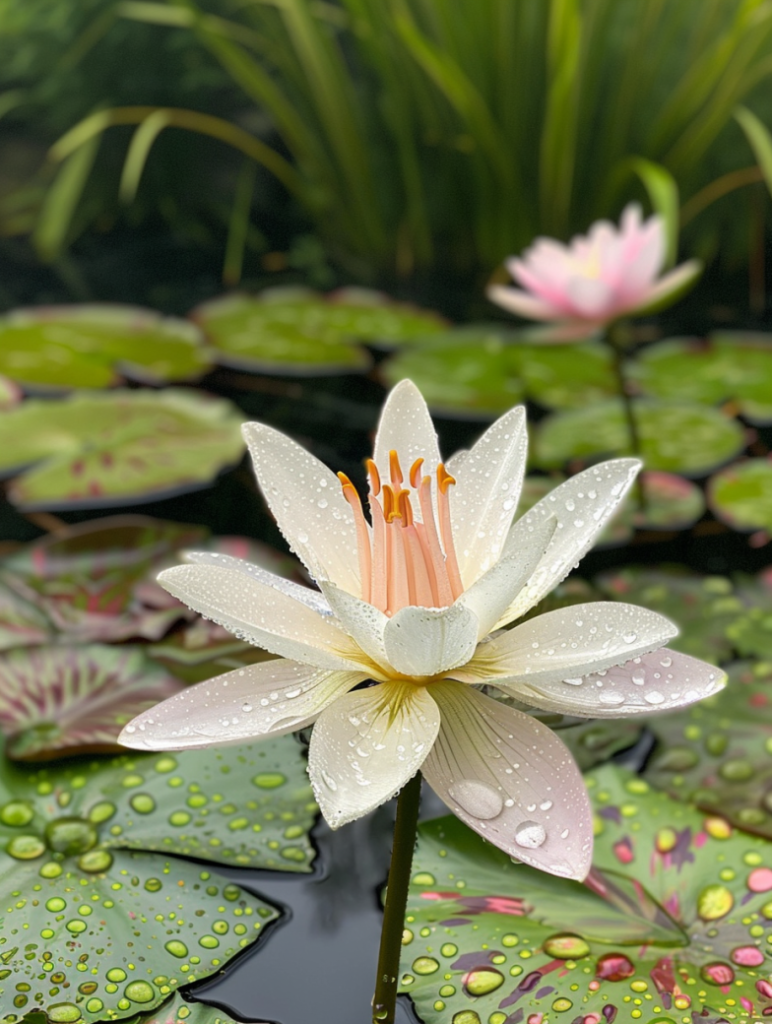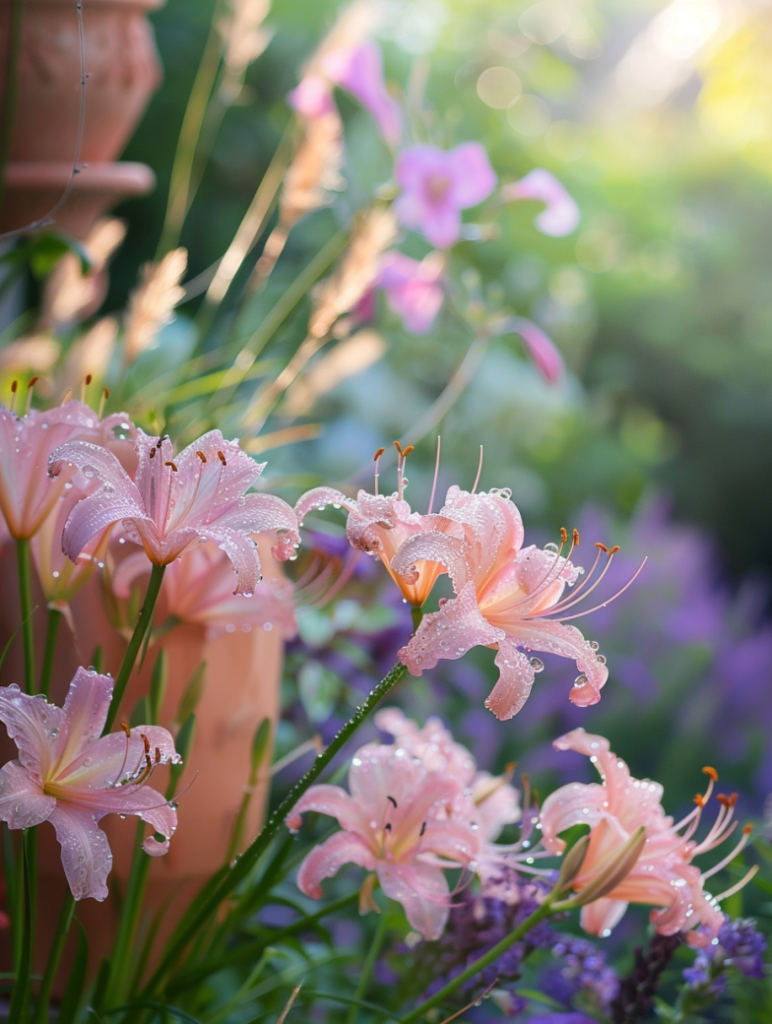
If you want a garden that blooms continuously from spring to fall, planting long-flowering bulbs is the perfect solution. These hardy plants provide vibrant colors and beautiful flowers for extended periods, ensuring your garden stays lively with minimal effort. Below, we explore the best long-blooming bulbs, including their unique features, ideal growing conditions, and expert care tips.
1. Dahlias

Bloom Time: Midsummer to first frost
Dahlias are a favorite among gardeners for their spectacular, long-lasting blooms. Available in a wide range of colors, shapes, and sizes—from petite pompons to giant dinnerplate varieties—these Mexican natives thrive in full sun and well-draining soil.
Why Grow Dahlias?
- Versatile: Perfect for borders, containers, and cut flower gardens.
- Attract Pollinators: Bees and butterflies love their nectar-rich blooms.
- Endless Variety: Over 50,000 registered cultivars exist!
Care Tips:
- Planting: Wait until soil warms in spring (after last frost).
- Spacing: Space tubers 12–24 inches apart, depending on variety.
- Maintenance: Pinch back young plants to encourage bushiness.
- Overwintering: In cold climates, dig up tubers after first frost and store in a cool, dry place.
2. Gladiolus

Bloom Time: Summer to early fall
Known for their tall, striking flower spikes, gladiolus (or “glads”) produce blooms in almost every color imaginable. These South African natives make excellent cut flowers and add vertical interest to garden beds.
Why Grow Gladiolus?
- Cut Flower Favorite: Each stem can last over a week in a vase.
- Deer-Resistant: Less prone to browsing than other flowers.
- Easy to Grow: Low-maintenance and fast-growing.
Care Tips:
- Succession Planting: Sow corms every two weeks for continuous blooms.
- Support Needed: Stake tall varieties to prevent wind damage.
- Winter Care: In zones below 7, dig up corms and store in a frost-free area.
3. Lilies (Asiatic & Oriental)

Bloom Time: Early to late summer
Lilies are renowned for their fragrant, showy flowers. Asiatic lilies bloom earlier (June–July), while Oriental lilies extend the season with their intoxicating fragrance (July–August).
Why Grow Lilies?
- Fragrance: Oriental varieties are especially aromatic.
- Perennial Power: Return yearly with minimal care.
- Great for Cutting: Long vase life and stunning arrangements.
Care Tips:
- Planting Depth: Bury bulbs 3 times their height (6–8 inches deep).
- Mulching: Helps retain moisture and regulate soil temperature.
- Pest Control: Watch for lily beetles—handpick or use neem oil.
4. Canna Lilies

Bloom Time: Early summer to frost
With their bold foliage and tropical-looking flowers, canna lilies bring drama to any garden. These heat-loving plants thrive in humid conditions and are excellent for water gardens.
Why Grow Canna Lilies?
- Tropical Appeal: Large, banana-like leaves in green, bronze, or variegated hues.
- Drought-Tolerant: Once established, they handle dry spells well.
- Wildlife Attraction: Hummingbirds adore their bright blooms.
Care Tips:
- Sun Requirements: Full sun (6+ hours daily) for best flowering.
- Fertilization: Feed monthly with a balanced fertilizer.
- Winter Storage: In cold climates, dig up rhizomes and store in peat moss.
5. Begonias (Tuberous)

Bloom Time: Late spring to first frost
Tuberous begonias produce lush, rose-like flowers in shades of pink, red, orange, and white. They thrive in shade, making them perfect for brightening dark garden corners.
Why Grow Tuberous Begonias?
- Shade Lovers: One of the few bulbs that bloom well in low light.
- Container Stars: Excellent for hanging baskets and pots.
- Long-Lasting Blooms: Individual flowers can persist for weeks.
Care Tips:
- Watering: Keep soil moist but not waterlogged (susceptible to rot).
- Deadheading: Remove faded blooms to encourage new ones.
- Overwintering: Store tubers in a dry, cool place (50–55°F).
6. Crocus (Autumn-Blooming Varieties)

Bloom Time: Fall
While most crocus varieties bloom in spring, autumn crocus (Colchicum) provides unexpected late-season color. Their cup-shaped flowers appear without foliage, creating a magical display.
Why Grow Autumn Crocus?
- Surprise Blooms: Flowers emerge when most plants are fading.
- Deer & Rodent Resistant: Toxic to pests but safe for pollinators.
- Naturalizing: Spreads over time for larger displays.
Care Tips:
- Planting Time: Late summer for fall blooms.
- Soil: Well-draining, slightly sandy soil is best.
- Maintenance: Virtually care-free once established.
7. Alliums (Ornamental Onions)

Bloom Time: Late spring to early summer
Alliums add architectural interest with their spherical flower clusters. Many varieties, like ‘Globemaster,’ have long-lasting blooms that transition into attractive seed heads.
Why Grow Alliums?
- Drought-Tolerant: Thrives in dry conditions once established.
- Pollinator-Friendly: Bees love their nectar-rich blooms.
- Deer & Rabbit Resistant: Their onion scent deters pests.
Care Tips:
- Planting Depth: 3 times the bulb’s height (6–8 inches).
- Sun Requirements: Full sun for best results.
- Low Maintenance: Rarely need dividing or extra care.
8. Agapanthus (Lily of the Nile)

Bloom Time: Summer
Agapanthus produces clusters of blue or white trumpet-shaped flowers on tall stalks. They’re perfect for borders, containers, and coastal gardens.
Why Grow Agapanthus?
- Long Bloom Period: Flowers last for weeks.
- Heat & Salt Tolerant: Great for seaside gardens.
- Evergreen in Warm Climates: Retains foliage year-round in zones 8–11.
Care Tips:
- Watering: Regular moisture but avoid soggy soil.
- Fertilization: Feed in spring with a balanced fertilizer.
- Division: Every 4–5 years to prevent overcrowding.
9. Nerine (Guernsey Lily)

Bloom Time: Late summer to fall
Nerine bulbs produce delicate, spider-like flowers in pink, red, or white. They’re excellent for adding late-season color when most flowers fade.
Why Grow Nerine?
- Late Bloomer: Extends garden interest into fall.
- Drought-Tolerant: Once established, needs little water.
- Great for Cut Flowers: Long-lasting in arrangements.
Care Tips:
- Planting: Neck of bulb should be slightly above soil.
- Sun Needs: Full sun for best flowering.
- Winter Care: Mulch in colder zones (below 7).
Bloom Time: Fall to winter
10. Cyclamen (Hardy Varieties)

Hardy cyclamen (Cyclamen hederifolium) offers delicate, upswept flowers when most other plants are dormant. Perfect for woodland gardens and shady spots.
Why Grow Hardy Cyclamen?
- Winter Interest: Blooms when little else does.
- Ground Cover: Attractive marbled foliage spreads over time.
- Deer & Rabbit Resistant: Toxic to browsing animals.
Care Tips:
- Planting: Just below soil surface in dappled shade.
- Watering: Keep moist in fall, drier in summer dormancy.
- Naturalizing: Self-seeds for expanding colonies.
Final Thoughts
By incorporating these long-flowering bulbs into your garden, you can enjoy continuous blooms from spring through fall. Whether you prefer bold dahlias, fragrant lilies, or late-blooming crocus, there’s a bulb for every garden style and climate.
Pro Tip: Combine early, mid, and late-season bloomers for a garden that never stops flowering!
Want More? Check out our guide on companion planting with bulbs for even more garden inspiration!